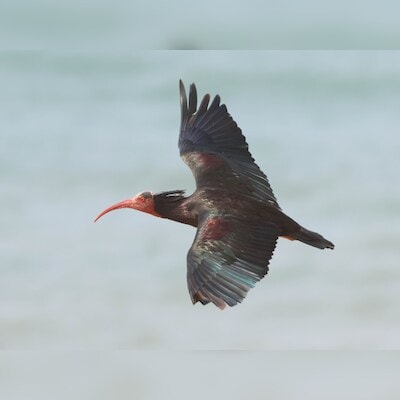Back after 300 years, conservative efforts help bring iblis back to Europe | World News

The northern bald ibis has returned to Europe after vanishing for over three centuries. These birds with glossy plumage and distinctive curved beaks once inhabited three continents and held symbolic significance in ancient cultures. They also had their own hieroglyph symbolising the word “spirit.”
Back in the late 20th century, the species had only 59 breeding pairs, all in Morocco. The continuous human activities, which include hunting, habitat destruction, and pesticide use, brought the birds’ population to the edge of extinction.
Click here to connect with us on WhatsApp
Conservation success in Morocco
Conservation initiatives to stabilise the population of northern bald ibises led Morocco to establish Souss-Massa National Park on its west coast protecting the breeding and feeding habitats of the bird.
In 1984, a research programme was initiated in 1994 helping to monitor the population that led to a significant recovery. There are over 500 of them in the wild now and the International Union for Conservation of Nature (IUCN) has changed their status from “critically endangered” to “endangered.”
These birds prefer to nest in cliffs, rocky outcrops and even urban ruins and are adaptive foragers. Their diet is made up of insects and larvae, though they are forced to change their habitats in nature.
Lost species return to Europe
The species had disappeared from European range, although iblis could always be spotted in Morocco. According to CNN, a project to reintroduce the northern bald ibis to Europe has begun yielding results. Spain took a major step in this direction when Andalusia successfully reintroduced birds into the wild.
These chicks are raised by human ‘parents’ who have gradually released them into their natural habitat. It was first begun in 2004 and helped to re-establish the species in southern Europe.
Austrian biologist Johannes Fritz began a unique approach to reintroduce a migratory population in Austria and Germany. The birds were raised in captivity and lacked the knowledge of migratory routes. They were taught to migrate by following a tiny aircraft. The ultralight aircraft soars through the sky, and human foster parents cheer and wave from the back encouraging the birds in the flight, according to The Guardian.
The plane is equipped with a small fan motor at the rear and a yellow parachute keeping it airborne. Since 2003, Fritz and his team guided northern bald ibises to southern Europe from Germany in this manner. The birds follow a route adjusted to end in Spain due to environmental changes.
Challenges and threats for northern bald ibis
Despite some success, the northern bald ibis still faces a few challenges. Threats like poaching, pesticides and climate change continue to jeopardise their survival.
Poaching alone in 2023 accounted for the loss of 17 per cent of migrating birds in Europe. The changing climate forces the ibises to adjust their mitigation patterns and the timing of their journeys that shift to account for altered environmental conditions.
First Published: Oct 01 2024 | 3:03 PM IST




